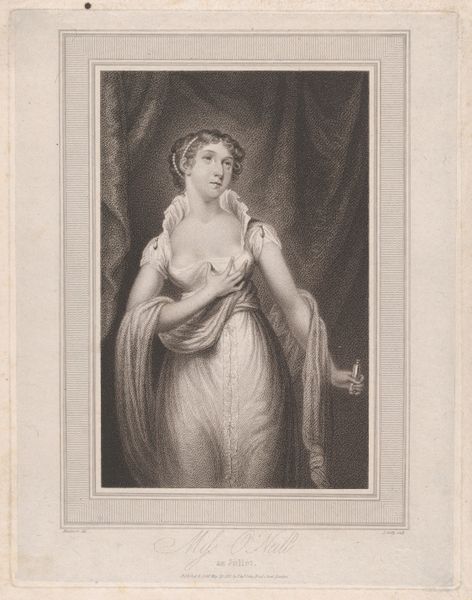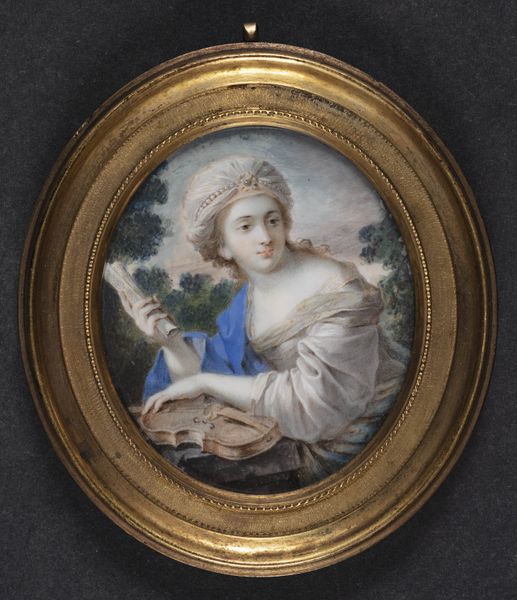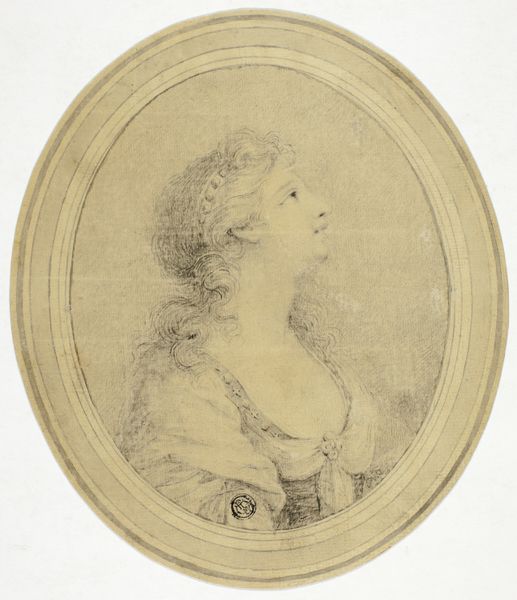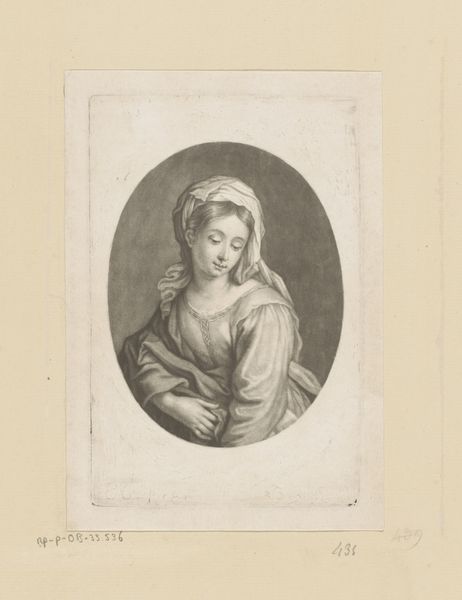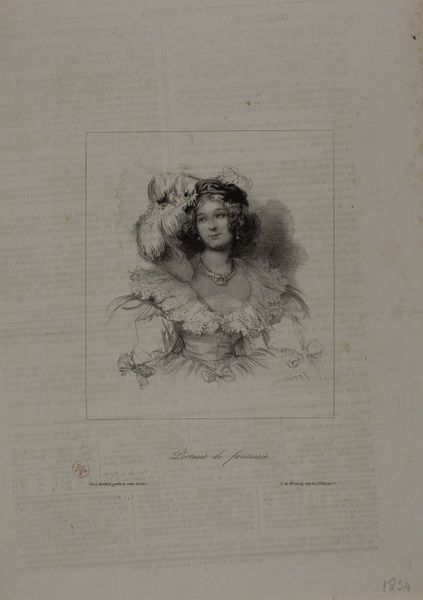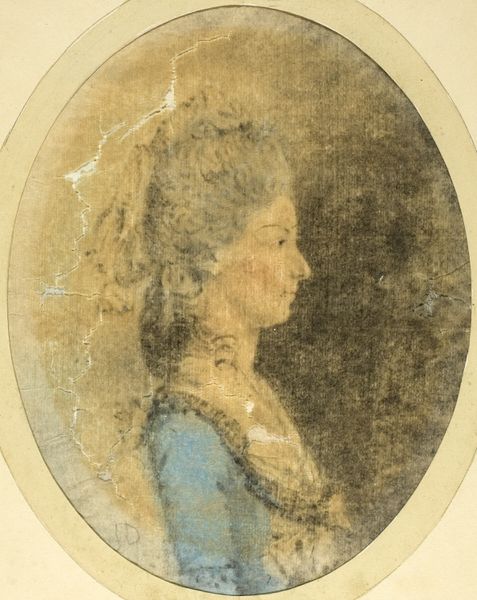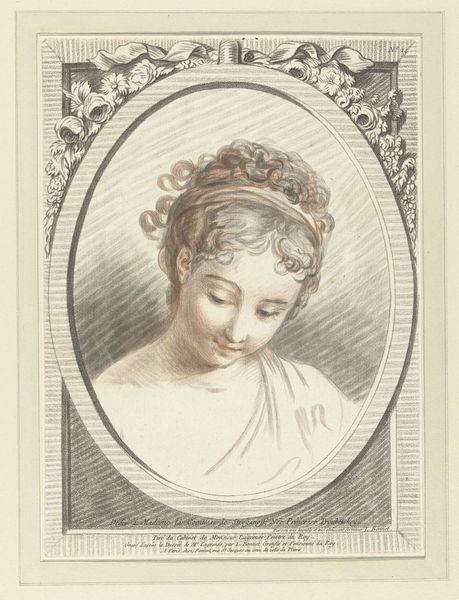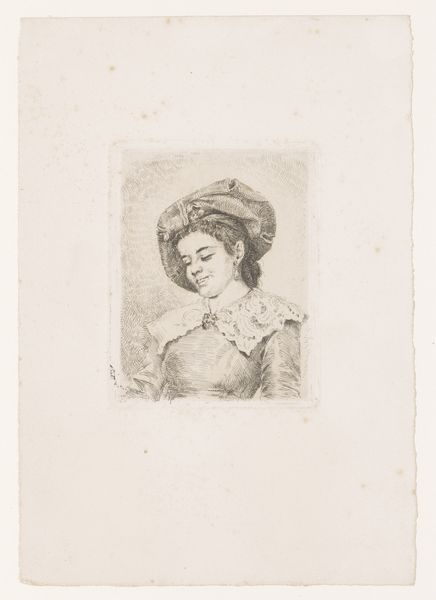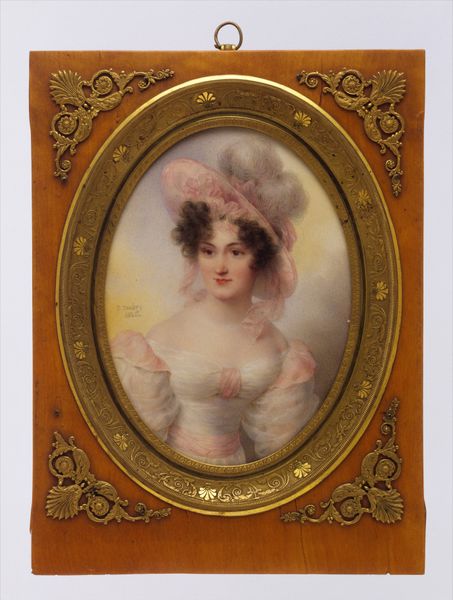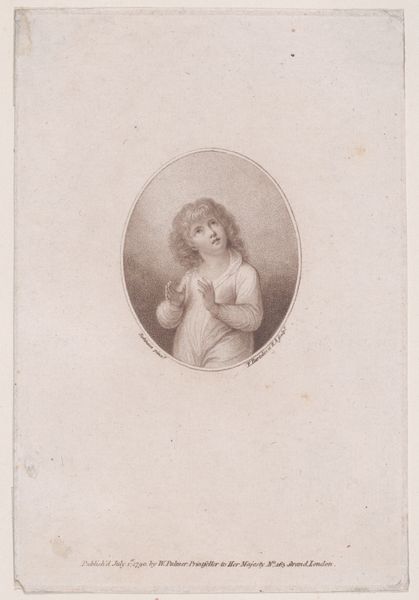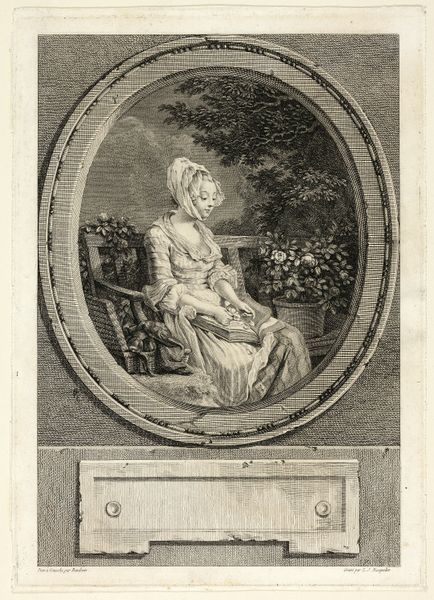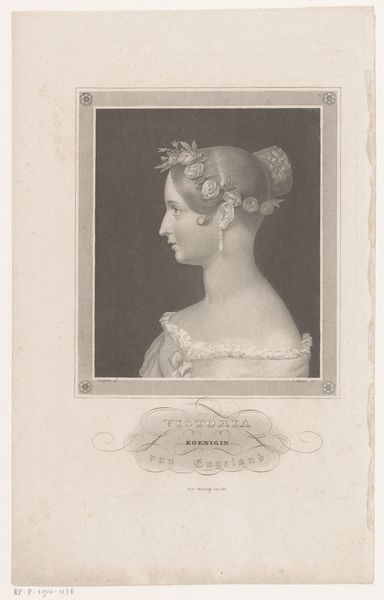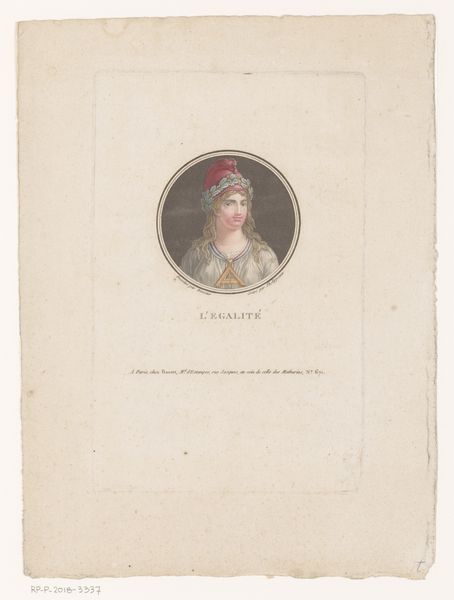
drawing, print, paper, engraving
#
portrait
#
drawing
#
neoclassicism
# print
#
figuration
#
paper
#
line
#
portrait drawing
#
engraving
#
portrait art
Dimensions: 260 mm (height) x 195 mm (width) (netto)
Curator: Here we have "A Chaldean Lady," an engraving rendered in 1782. Its Neoclassical lines promise an intriguing perspective. It currently resides here at the SMK, Statens Museum for Kunst. Editor: My first impression is one of quiet melancholy. The downward gaze, the soft lines… there’s a definite sense of introspection. It’s also lovely how the engraving resembles the tones of a sanguine drawing, giving it a warm yet faded feel. Curator: Indeed, the sitter's gaze and attire reflect broader trends in late 18th-century European art, when there was an influx of imagery from the Middle East, as Western Europe saw it. It served to conjure the exotic, and arguably romanticize or misrepresent Eastern cultures, feeding the era's imperial appetite and interests. Editor: That exoticism is key! Turbans and vaguely ‘Eastern’ garments became powerful visual shorthand. She embodies this fascination, her turban acting as an emblem, almost a codified symbol, rather than representing genuine Chaldean cultural identity. We should acknowledge how these depictions helped craft, and possibly distort, the European image of the "Orient" at the time. Curator: Precisely. It's fascinating how this print circulates ideas, creating a readily available image of the Chaldean woman for consumption and further interpretation. What are your thoughts on that role of the “circulating image?" Editor: Incredibly important. It showcases the power images hold in shaping perception. Prints like these are like visual echoes; repeated and reimagined, they cement ideas in the collective consciousness and tell us much about European aspirations in the late 18th century. Seeing this as a portrait is also problematic given what seems like a cultural invention rather than an image from life. Curator: This piece reminds us that the role of art is inextricably bound to cultural exchange and potential for misinterpretation. The legacy of imagery in prints, like "A Chaldean Lady" prompts us to constantly examine these exchanges critically. Editor: Absolutely, and thinking of cultural symbols allows us to recognize those threads running through time and hopefully create space to reflect on them. It's amazing to have objects like this here today for that reason.
Comments
No comments
Be the first to comment and join the conversation on the ultimate creative platform.
